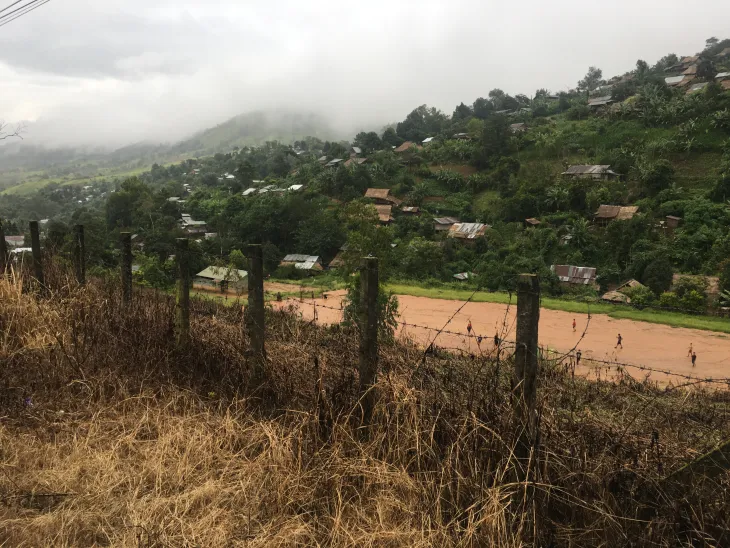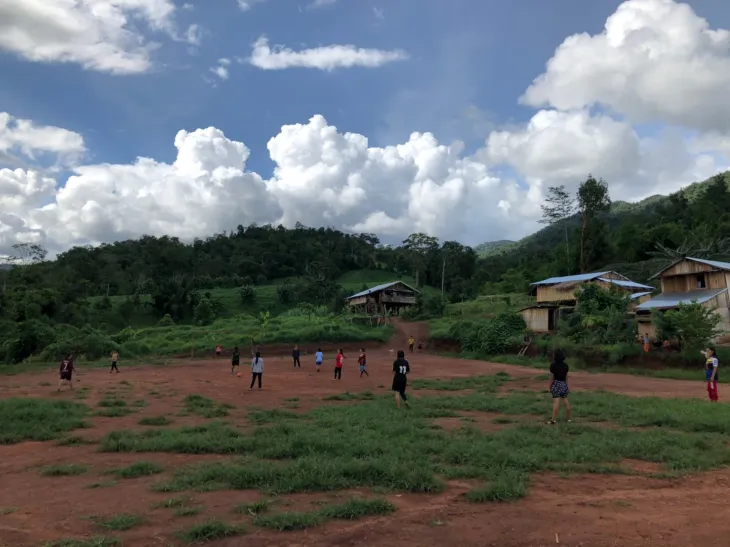Aryuwat Raruen explains why durable solutions must be accountable to refugee voices.
Read the Burmese version of this post here.

Successive Myanmar governments have attempted to consolidate power by gaining control over various states and people. Their efforts have resulted in entrenched, ongoing conflicts between the Burmese military and other ethnic armed organisations, such as the Karen National Union (KNU). Consequently, many ethnic armed group members and displaced people have fled to Thailand to seek refuge from armed conflict. More than forty refugee camps were set up along the Thai-Myanmar border in the late 1980s and 1990s (Kasetsisi 2001; Trichote 2004; Vaddhanaphuti and Sitthikriengkrai 2016). At first, Thai authorities provided some humanitarian support for refugees, and provided them with temporary asylum. But, as the Myanmar military periodically attacked these camps, in the late 1990s, Thai authorities consolidated the refugees into bigger camps to facilitate control over them. Now assistance is provided to refugees in only nine refugee camps in four border provinces: Tak, Mae Hong Son, Kanchanaburi, and Ratchaburi. Currently, there are more than ninety thousand refugees on the Thai-Myanmar border, most of whom are Karen. Many have now been refugees for more than three decades.
Since 2011, global attention on these camps has faded, and the future of these refugees is uncertain. In order to provide safe, viable options for displaced people on the Thai-Myanmar border, humanitarian organisations must consider the voices and perspectives of refugees. This issue is close to my heart as I am a Karen who grew up near the Thai-Myanmar border. I have been working with refugees for almost three years with Partners Relief and Development Foundation based in Mae Sot, Tak.
Refugees are very close to us here in Mae Sot and interaction with refugees is a part of daily life. Whenever I take the bus back to my hometown, I see Karen refugees often. I love to talk, so that is how I got to know many of them. One of my refugee friends worked for the same foundation as me. I became perplexed by how many refugees stayed in the camps, waiting for relocation or improved aid, rather than leaving the camps for repatriation to Myanmar or to pursue other livelihoods. This drove me to pursue my MA in ethnicity and development at Chiang Mai University.
My first main goal for studying at the Center for Ethnic Studies and Development was not to push any policy changes for refugees, but to understand them in depth: their problems, their lives, their dreams. It took me several months to understand the structures and the larger forces driving displacement in the area. I realised that in order to create helpful outcomes, international organizations involved in defining durable solutions must listen to the voices of refugees. Refugees, who must live out the rest of their lives in resettlement sites, must at least be given some choice in the matter.
Refugee camps are intended to be temporary, but refugees themselves need long term options, especially as international funding fades. The United Nations High Commissioner for Refugees (UNHCR) has offered three “durable solutions” to refugees, including on the Thai-Myanmar, in the hopes of closing the camps: resettlement, local integration, and voluntary repatriation.
The first option, resettlement, is raised when refugees are unable to return to their country of origin. Resettlement helps refugees find a more stable life in another country. In 2005, the US government agreed to receive refugees from the Thai-Myanmar border. However, this option was closed in January 2014. Today, there are still some refugees who registered with the US resettlement program who are still waiting for relocation. Some refugees continue waiting with the hope that one day the resettlement program will reopen.
The second option, local integration, is where refugees receive help with their language and other skills needed to live a full life in their first country of refuge. However, since Thailand is not a member of the 1951 Refugee Convention, local integration is not realistically possible. Still, some refugees try to integrate individually. They build up relationships between refugees and the local community by sending their children to Thai schools or, in some cases, refugees get married to Thai citizen.
The third option is the voluntary repatriation of refugees to their countries of origin. Officially, this is the only available alternative for refugees in Thailand right now. While some refugees in Thailand are concerned about their deteriorating livelihoods in Thailand and do genuinely wish to return to Myanmar, some are in fact forced to “voluntarily” return to Myanmar against their will. Because repatriation to UNHCR would mean going back to a government-controlled area, refugees may reject this option as their homes are in a KNU-controlled area. That makes repatriation to Myanmar very complicated issue and few refugees choose to repatriate with UNHCR. As I will explain, some refugees choose to return to KNU-controlled areas on their own, but this is a challenging path too.
During my research I had the opportunity to travel to several villages in the border area and met many refugees who chose to return to KNU-controlled areas of Karen State. Most of them said the reason for their return was the reduction in aid delivered to them through the refugee camps. According to Thai policies, refugees are unable to officially leave the camp. They have to keep quiet, with no legal recourse to request more aid or freer movement. So, when the quality and quantity of funding decreases, it directly affects them. Some of my interviewees pointed out that as a result of funding reductions, they have been unable to receive the four necessities they require, which are clothing, food, housing, and medicine.

Karen refugee Naw Su Poe (a pseudonym) recently decided to return to Myanmar – but not to a government-controlled location. Instead, she chose to go to an area controlled by the KNU. She explained her experience leaving the camp after inviting me to have lunch with her and her family while I was collecting data for my thesis.
Naw Su Poe’s bamboo house was very plain and her two daughters sat beside her husband as she talked. She told me that she was originally from the Karen National Liberation Army (KNLA) Brigade 6 area. Her family first crossed into Thailand because there was a military battle in their village. After spending fifteen years in the refugee camps, there was a marked reduction in food aid delivered through the camp. Naw Su Poe said, “We couldn’t even make a fire for cooking because we couldn’t find bamboo or wood. In our daily lives we were confronted by poverty. We had to hide and sneak out of the camp just to collect basic wood and bamboo. This is why I made the decision to return to Myanmar.”
The much older Uncle Tee Wah (a pseudonym) provided further perspective on why repatriating to a KNU area is preferable for some refugees. I met him in Wa Hmee Aye Village (also a pseudonym) in a KNU-controlled village, close to the Thailand border. It was a cloudy day, and I kept watch on the grey, threatening skies as I rode my Dad’s old motorbike there. Along the road, farmers were planting corn seeds and I enjoyed the air rushing past my face, seeing the brown earth landscape uncovering itself like chocolate.
When I arrived at Wa Hmee Aye village, I spoke to several people before Uncle Tee Wah. They had chosen to live here, in a KNU area, because they had experienced too much subjugation by the Tatmadaw, even until today. They remained skeptical of authorities and their perspective was: if you fight for your rights and are forced from your own home, would you believe the people who attacked you if they one day said you could return? Myanmar’s politics and circumstances may have appeared to have changed, but would you trust the “new” authorities?
Uncle Tee Wah said bluntly: “Myanmar’s administration is attempting to showcase its willingness to receive refugees but we can’t put our faith in them.” He used the analogy of, “hanging the goat’s head, but selling the pork meat”. This refers to someone putting a goat head above their market stall, implying they are selling expensive goat meat, although they are actually selling cheap, half-price pork meat at a goat price to customers.
Uncle Tee Wah also decided to move to Wa Hmee Aye Village out of a desire not to “waste” the remaining time in his life. He said that because he was getting older and did not have much time left, he refused to believe the people who had wounded him and caused his life so much misery. Engaging with the Myanmar authorities was a complete waste of time. “It’s also preferable to come to this area rather than in a refugee camp, which is not ideal. The situation is pretty terrible there since, in addition to the decreased aid, you can’t find work. I am getting older and when I get sick, I will be pushed to the bottom of the priority list for work,” Uncle Tee Wah said.
The experiences of Uncle Tee Wah show how trauma and unforgettable memories can reinforce refugee ambivalence. If you look at the current situation in Myanmar after the 1 February military coup, there is still considerable fighting between ethnic armed groups such as the Karen National Liberation Army and the Tatmadaw.
This begs the question: “Can these refugees really go home now?”
The top-down durable solutions that the UNHCR and Thai authorities have promoted since the humanitarian crisis began on the Thailand-Myanmar border require revision. They will continue to directly affect refugee lives in the future. Before all the authorities make their decisions, they must include refugee voices and ideas in order to create real durable solutions for them.
(Featured image courtesy of Aryuwat Raruen)
Aryuwat Raruen is a graduate student in the Ethnicity and Development program at Chiang Mai University (CMU) with a bachelor’s degree in education. He’s interested in refugees, ethnicity, migrants and borderlands. Currently, he works for a migrant school as a teacher and volunteers as a coordinator for refugees in Mae Sot, Tak, Thailand. This piece is based on his chapter in the upcoming volume Moving Around Myanmar: Migration In, From and Back to Burma (Chiang Mai University Press), which will be published later this year.
Like This Article
September 26, 2024
September 05, 2024